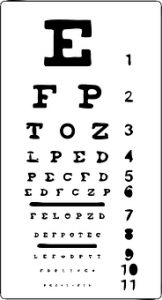Presbyopia is a physiological visual disorder, characterised by the gradual loss of accommodation capacity (focusing) of the eyestriking all individuals after the age of 40. When one becomes presbyopic, focusing and seeing objects placed close by becomes difficult, in fact, one tends to move the smartphone away and

others reading materials to see them more clearly. This, however, is only a temporary solution that leads, among other things, to eye fatigue and consequent headaches.
Worldwide, there were an estimated 1.3 billion presbyopes in 2011, which according to current trends will become 2.1 billion by 2020; in Presbyopia affects around 28 million individuals in Italy.
Despite considerable scientific progress, both in research and in the
n the use of increasingly innovative diagnostic tools, the specific role of each ocular factor (lens hardening, changes in the elasticity of the lens capsule, natural lens size, zonular attachment geometry and ciliary muscle contraction) in the loss of the eye's accommodative power and the onset of presbyopia has yet to be clarified.
Non-surgical treatment
The glasses with progressive lenses are the most common solution for presbyopia. Line-free multifocal lenses restore clear near vision and offer good vision at all distances, regardless of what refractive errors are present in addition to presbyopia. Another option is the glasses with bifocal lenses, much less popular today because of the limited vision they can provide and a clearly visible bifocal line. It is also common in presbyopes to show a mincreased sensitivity to light and glare, in this sense the lenses photochromic, which darken automatically in sunlight, available as both progressive and bifocal lenses, are a good choice. Another possible choice are reading-only spectacles: these, unlike the bifocals and progressives that many wear all day, are worn to see nearby objects more clearly only when necessary. Also contact lenses monofocal, bifocal or multifocal, are able to provide satisfactory vision for presbyopes, although they cannot restore or replace the accommodative power of the eye.
Surgical treatment
If one does not want to wear glasses or contact lenses, numerous surgical and para-surgical options are available today. In recent decades, numerous techniques have been developed in order to eliminate dependence on spectacles and restore a true accommodative capacity of the eye.
The laser refractive surgery can correct the most common visual defects. With laser light, the eye surgeon can modify the shape of the cornea (the transparent ocular membrane in front of the iris), thus improving focus. The techniques in this case are different: the least recent called monovision uses the excimer laser and corrects the dominant eye for distance vision and the non-dominant eye for near vision. More recently, a technologically advanced type of laser has been developed, the femtolaser, which shapes the cornea, creating different focuses (multifocality) for both distance and near vision. Refractive laser surgery has certain risks, among them: the possibility of affecting areas that should not have been treated (decentring), infections, problems in the reconstitution of the corneal surface, regression of the correction made and the formation of opacities in the cornea.
A new frontier in the correction of presbyopia is by replacement of the natural lens (crystalline lens) with an artificial intraocular lens (IOL) during cataract surgery.
IOLs can be monofocal (alternating monovision), multifocals (several focuses: distance, near, intermediate) and the most innovative EDOF (Extended Depth Of Focus), designed to achieve continuous vision at all distances. The implantation of intraocular lenses is an excellent strategy for the definitive resolution of not only presbyopia, but also cataracts, and it also makes it possible to correct high visual defects that are not treatable with lasers. Tnevertheless, a thorough and personalised physical and psychological assessment of patients is necessary in order to identify which ones can truly benefit from this approach.
Source
Current Management of Presbyopia. P.A. Papadopoulos and A.P. Papadopoulos. MEAJO, 21: 10-17, 2014.
Dr. Carmelo Chines
Direttore responsabile
